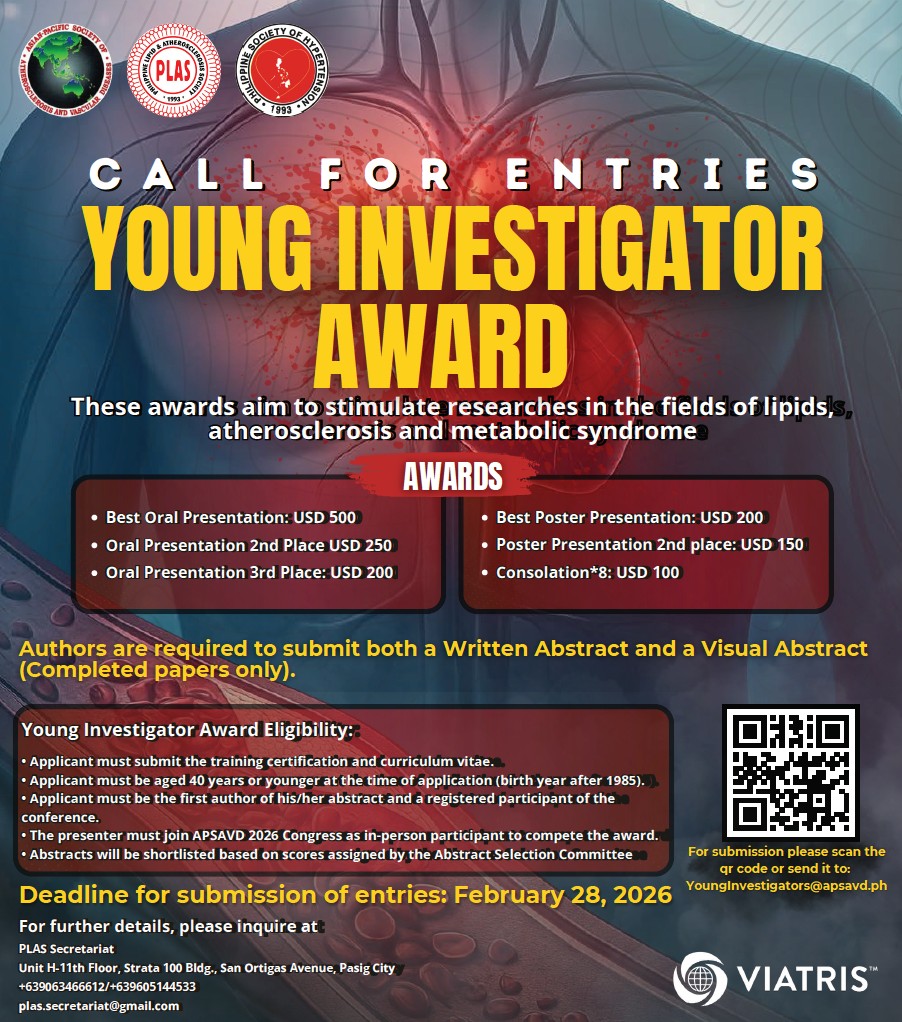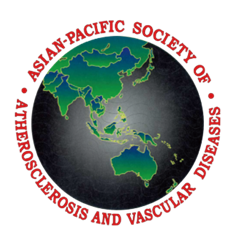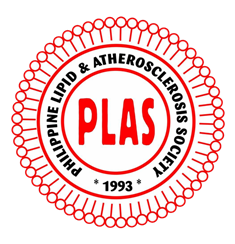YIA Research Guidelines
Abstract Category (Oral/ Poster)
- Epidemiology of XXXXageingXXXX, vascular disease, dyslipidemia or metabolic syndrome
- Basic science research of atherosclerosis, endothelium, inflammation, microcirculation or thrombosis/hemostasis
- Cardiometabolic disease: basic/translational science and clinical research
- Familial hypercholesterolemia: basic/translational science and clinical research
- Imaging in atherosclerosis and cardiovascular disease
- Lipids and lipoprotein metabolism: basic/translational science and clinical research
- Microbiota and nutrition: basic/translational science and clinical research
- Novel interventional therapies for atherosclerosis, vascular disease, or metabolic disorders
- Vascular diseases and thrombosis: clinical science
- Big data and precision medicine
General Policy
- The user who submitted the abstract to the submission system would be recognized as the Presenting Author. The presenting author of an accepted abstract (oral and poster) must register by February 28, 2026. Registration is FREE for the presenting author.
- Abstracts must be original. Those that have been previously presented will be accepted only if they were presented at local congresses; they will not be considered if previously presented at international congresses.
- Presenting Authors of accepted abstracts MUST be registered, even if they are students, and should be responsible for all expenses to be incurred in the production of their presentations, travel, and accommodation during the Conference.
- Authors must submit a Written and Visual Abstract.
- All submissions must be in English.
- Consent from authors will be taken for possible posting of winning abstracts at the Philippine Lipid and Atherosclerosis Society website and Facebook pages.
Text Lay-out
Give a short and comprehensive review of the basic items of your study. This can be done by dividing your text into several clearly delineated paragraphs. Remember that it is easy to start reading a paragraph of six lines, but most people avoid one with 30.
A heading should be made for the top of the poster, containing the title, name of author/s, and the institutional affiliation of the author/s. The name of the presenting author should be underlined. Handouts for distribution with the poster text are encouraged.
Give a short and comprehensive review of the basic items of your study. This can be done by dividing your text into several clearly delineated paragraphs. Remember that it is easy to start reading a paragraph of six lines, but most people avoid one with 30.
A heading should be made for the top of the poster, containing the title, name of author/s, and the institutional affiliation of the author/s. The name of the presenting author should be underlined. Handouts for distribution with the poster text are encouraged.
Illustration Layout
Drawing, diagrams, and photos are extremely helpful and often necessary to display results and conclusions, but should be of high resolution. Make sure that your illustrations are easy to understand; do not overload any chart or drawing with information.
Drawing, diagrams, and photos are extremely helpful and often necessary to display results and conclusions, but should be of high resolution. Make sure that your illustrations are easy to understand; do not overload any chart or drawing with information.
CONTENTS
CAPITALIZE ENTIRE ABSTRACT TITLE
Authors: Only underline the presenting author’s name.
Institution:
CAPITALIZE ENTIRE ABSTRACT TITLE
Authors: Only underline the presenting author’s name.
Institution:
OBJECTIVES: State main question or study objective(s) or hypothesis.
METHODOLOGY/METHODS:
DESIGN: Describe study design. Indicate if randomized, blinded and if temporal direction retrospective or prospective.
SETTING: indicate the study setting (hospital, clinic, community). Also include the level of clinical care (primary or tertiary).
PATIENTS/PARTICIPANTS: State selection procedures, entry criteria and numbers of participants entering and finishing the study.
INTERVENTION IF ANY: Describe the essential features of any intervention/exposure, including their method and duration of administration.
MAIN OUTCOME MEASURE (S): The primary study outcome measures should be indicated as planned before the data collection began.
SETTING: indicate the study setting (hospital, clinic, community). Also include the level of clinical care (primary or tertiary).
PATIENTS/PARTICIPANTS: State selection procedures, entry criteria and numbers of participants entering and finishing the study.
INTERVENTION IF ANY: Describe the essential features of any intervention/exposure, including their method and duration of administration.
MAIN OUTCOME MEASURE (S): The primary study outcome measures should be indicated as planned before the data collection began.
RESULTS: Outcomes & measurements, with statistical significance, if appropriate
CONCLUSIONS: State only those conclusions of the study that are directly supported by data, along with their clinical application or whether additional studies are required before the information should be used in usual clinical settings.
IMPORTANT DATES
October 30, 2025
Abstract Submission Open
October 30, 2025
February 28, 2026
Deadline for Abstract Submission
March 16, 2026
Notification of Abstract
March 16, 2026
March 20, 2026
Deadline for Abstract Author Registration
*All the Important Dates of APASVD 2026 is based in the Philippine Time zone (GMT+8).




